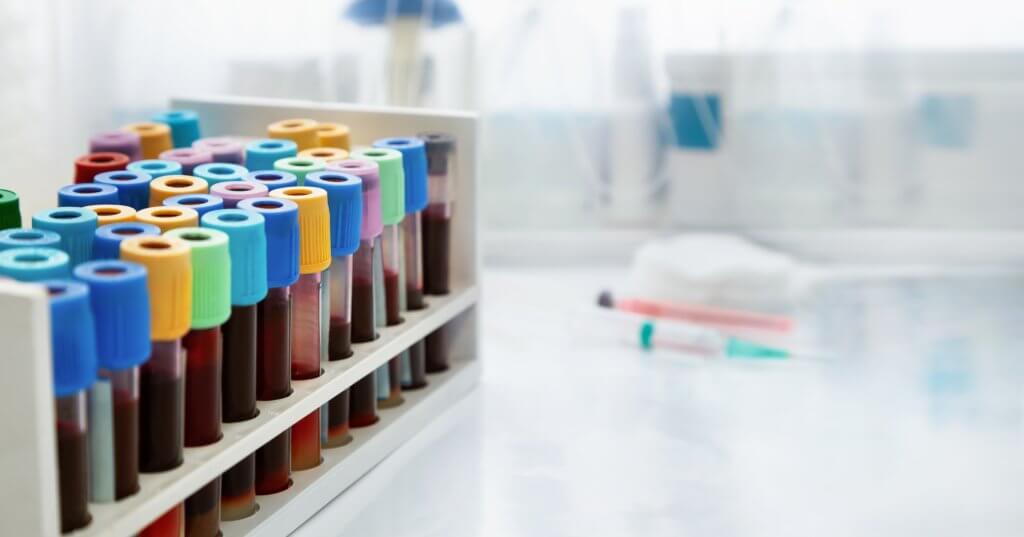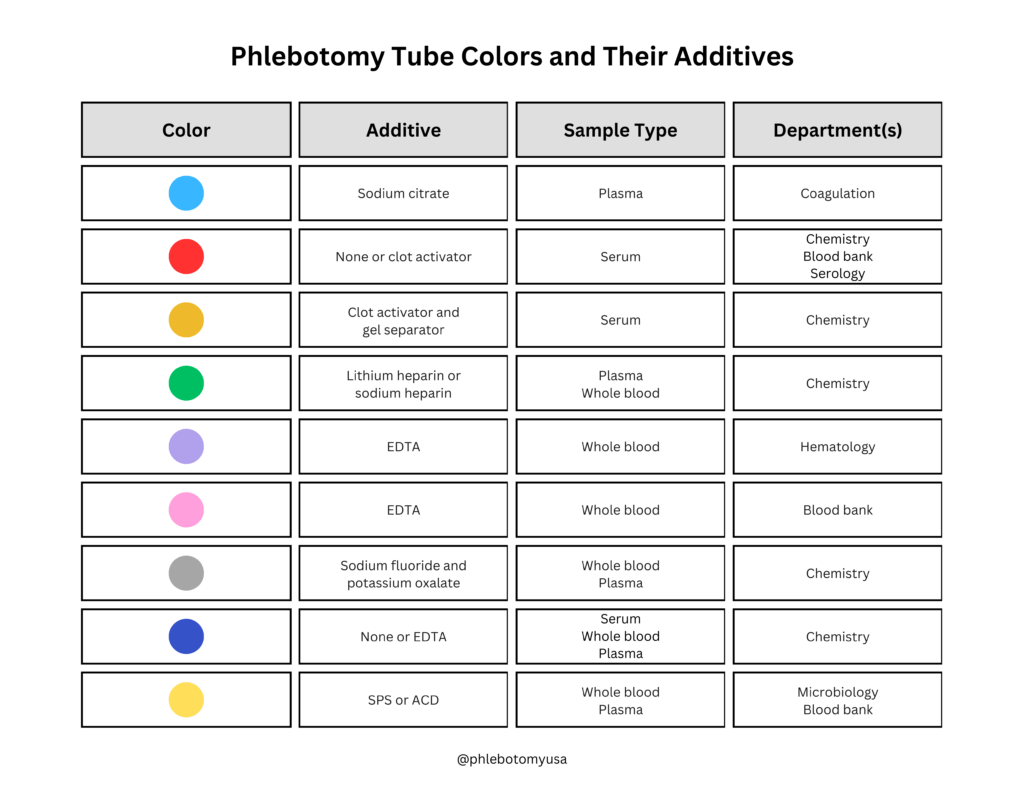24 Mar Tube Colors and the Tests They Are Used For
Phlebotomists become very familiar with the colored tubes used for blood collection because they handle them every day. Even though they might know the proper order to use them, they might not always know what each tube tests. Depending on where you work, the request sheet might only mention the color needed, the additive inside, or the lab department it’s headed to. If you’re a phlebotomist curious about the tests you’re drawing for or a patient wondering about your blood test, this article is here to help. We’ll explain what the different colors mean and the tests associated with each.
Light Blue Top Tube
The light blue top tube has sodium citrate. This stops the blood from clotting, which is crucial for coagulation studies where preventing clotting is necessary, including:
-
- Prothrombin Time (PT)
- International Normalized Ratio (INR)
- Activated Partial Thromboplastin Time (aPTT)
- Fibrinogen
Red Top Tube
The red-top tube sometimes has no additive, or it might contain a clot activator. This helps your blood clot naturally before the serum is separated. It’s a common choice for many tests that need serum, such as:
-
- Basic Metabolic Panel (BMP)
- Comprehensive Metabolic Panel (CMP)
- Liver Panel
- Lipid Panel
- Thyroid Stimulating Hormone (TSH)
- Serology tests
Gold Top Tube
Also known as a Serum Separator Tube (SST), the gold-top tube has a gel that separates the serum from cells after spinning it. It’s great for tests that need serum quickly, like:
-
- Hormone Levels
- Infectious Disease Tests
- Vitamin Levels
Green Top Tube
Green top tubes contain heparin, an anticoagulant perfect for chemistry tests on plasma or whole blood. These are vital for tests that need plasma separated right away, such as:
-
- Arterial Blood Gases (ABG)
- Basic Metabolic Panel (BMP)
- Ammonia
- Lactate
Lavender/Purple Top Tube
Lavender or purple top tubes have EDTA as an anticoagulant. This binds calcium to stop clotting. They’re used for a wide range of tests to diagnose and monitor conditions, including:
-
- Complete Blood Count (CBC)
- Hemoglobin A1c
- Erythrocyte Sedimentation Rate (ESR)
- Blood Typing
Pink Top Tube
Similar to lavender but for blood bank use, the pink top tube has EDTA. These tests ensure blood transfusions are safe and help manage the blood supply, including:
-
- Blood Typing
- Crossmatching
- Antibody Screening
Gray Top Tube
Designed specifically for glucose and lactate testing, the gray top tube contains potassium oxalate/sodium fluoride. These additives keep glucose levels stable until they can be analyzed, useful for tests like:
-
- Fasting Blood Sugar (FBS)
- Glucose Tolerance Test (GTT)
- Lactic Acid Measurement
Royal Blue Top Tube
Royal blue top tubes are made for tests that look for tiny amounts of things in your blood. These tubes can have EDTA inside, or they can be empty. They make sure your blood test doesn’t pick up any extra stuff from the tube that could mess up the results. This is super important for:
-
- Heavy Metals
- Mineral Levels
- Toxicology tests
Yellow Top Tube
There are two kinds of yellow top tubes. One is for DNA and paternity testing, and the other is for specialized immunology tests. These are key for:
-
- HLA Typing
- Paternity Testing
- DNA Analysis
Resources for You
If you’re looking for a certain test that is not listed here, there are many resources online where you can find information on which tests use which tubes. Some will even include what tubes to use if you don’t have the one you need. Here are some useful links to get you started:
Remember, every medical facility has its own specific rules and protocols, so it’s important to always follow the guidelines where you work. Always check with your lab to ensure you’re using the correct tubes for each test.
Conclusion
In conclusion, every test tube holds vital health information. Whether for managing illness, diagnosing diseases, or preparing for surgery, choosing the right color is crucial in healthcare. This guide aims to demystify the blood collection process, helping both healthcare workers and patients better understand the testing process.


